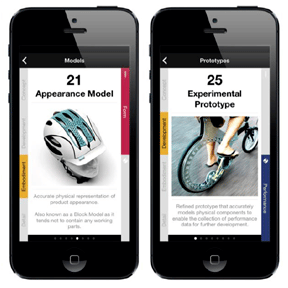IDSA publishes a selection of peer-reviewed academic education papers each year. These are collected during a community-wide open call period when design educators and practitioners submit materials for review by a group of judges serving on IDSA’s Academic Jury. The program also helps provide content for the annual Education Symposium, where some authors are invited to present their work from the stage to a live audience. To view the full Education Papers jury please visit meet the jury page.
Pragmatist Educational Theory And E-learning
One hundred years ago John Dewey wrote the book Democracy and Education establishing the prin- ciples necessary to govern an improved and democratic education system (1944). His ideas travelled across the world and inspired educators in Brazil, Japan, China
Author: Julija Naskova
Company / School: Hong Kong Polytechnic University School of Design
- 2015
- Paper Type: Case Study
- Education Symposium Theme: Designing the Future of Education
A Design Educator’s Evaluation Of A High School Design Curriculum
In the 2013-2014 academic year, Philadelphia schools saw major changes to their under-funded school system: arts programs and school nurses were being cut and over 20 schools were closed, which resulted in students being moved to other buildings around
Author: Lauren Georgian
Company / School: Philadelphia University
- 2015
- Paper Type: Case Study
- Education Symposium Theme: Designing the Future of Education
The Student And The Teaching As The Starting Point For New Directions
Vocation-focused design education should ideally aim at foreseeing the challenges and opportunities society and industry face, and act accordingly to these needs. Some of the obvious questions are: what should the next generation of designers be able to do,
Author: Thomas Degn, Iris Ridder
Company / School: Umeå Institute of Design, Umeå University, Dalarna University
- 2015
- Paper Type: Academic Research
- Education Symposium Theme: Designing the Future of Education
Visualization and fabrication tools in product design are evolving at a dramatic pace and are producing more intuitive and affordable technologies. These technologies open many opportunities for designers to tinker, explore and develop both artifacts and solutions for the
Author: Alex Lobos and Stan Rickel
Company / School: Rochester Institute of Technology
- 2015
- Paper Type: Case Study
- Education Symposium Theme: Designing the Future of Education
Corporate Education Programs To Develop Design Management & Leadership Talent
Companies seeking to deliver exceptional holistic designs to boost business performance require not only great designers, but great design management and design leadership. There have been numerous articles and studies seeking to prove that that it is not the
Author: Jay Peters
Company / School: PARK & Grow USA
- 2015
- Paper Type: Case Study
- Education Symposium Theme: Designing the Future of Education
Lessons Learned Teaching Design Futures
This paper explores how we might redesign education to face the challenges and opportunities of a sustainable future. Increasingly, designers operate within ever-broader contexts (e.g., technological, social, political, environmental, global). Design for sustainable futures requires the ability to envision
Author: Arnold Wasserman, Peter Scupelli, Judy Brooks
Company / School: Collective Invention, Carnegie Mellon University
- 2015
- Paper Type: Case Study
- Education Symposium Theme: Designing the Future of Education
2d Image Manipulation As A Driver For Ideation
Industrial Designers are renowned for their ability to work effectively with diverse and disparate individuals, disciplines and organisations during the creative process (Hurn, 2006). This is part of the makeup of the Industrial Designer that led to Tim Brown,
Author: Karl Hurn, Ian Storer
Company / School: Loughborough University
- 2015
- Paper Type: Case Study
- Education Symposium Theme: Designing the Future of Education
Blurring The Lines Between Industrial Design And Marketing
During the product development process, industrial designers and marketing professionals often work collaboratively. Yet, within a typical industrial design education, design students are minimally exposed to the discipline of marketing. When industrial design students graduate, they will possess the
Author: Michael Caston
Company / School: Metropolitan State University of Denver
- 2015
- Paper Type: Case Study
- Education Symposium Theme: Designing the Future of Education
As a relatively new field of scholarship, design research now confidently defines itself through distinctive academic journals, conferences and associations/societies. However, there is a tendency for the outcomes of academic design research to focus on academic endeavor, such as
Author: Dr. Mark Evans
Company / School: Loughborough University, UK
- 2015
- Paper Type: Academic Research
- Education Symposium Theme: Designing the Future of Education
Play As Tool To Discover And Shape New Contexts
This paper is a social game and experiment, a kind of Google Doc volley between two design educators, 1000 miles apart, teaching at two separate AICAD institutions, [PLAYER A] started the document. [PLAYER B] read [PLAYER A]’s initial writing
Author: Patricia Kovic, Chris Chapin
Company / School: Otis College of Art and Design, Kansas City Art Institute
- 2015
- Paper Type: Case Study
- Education Symposium Theme: Designing the Future of Education









